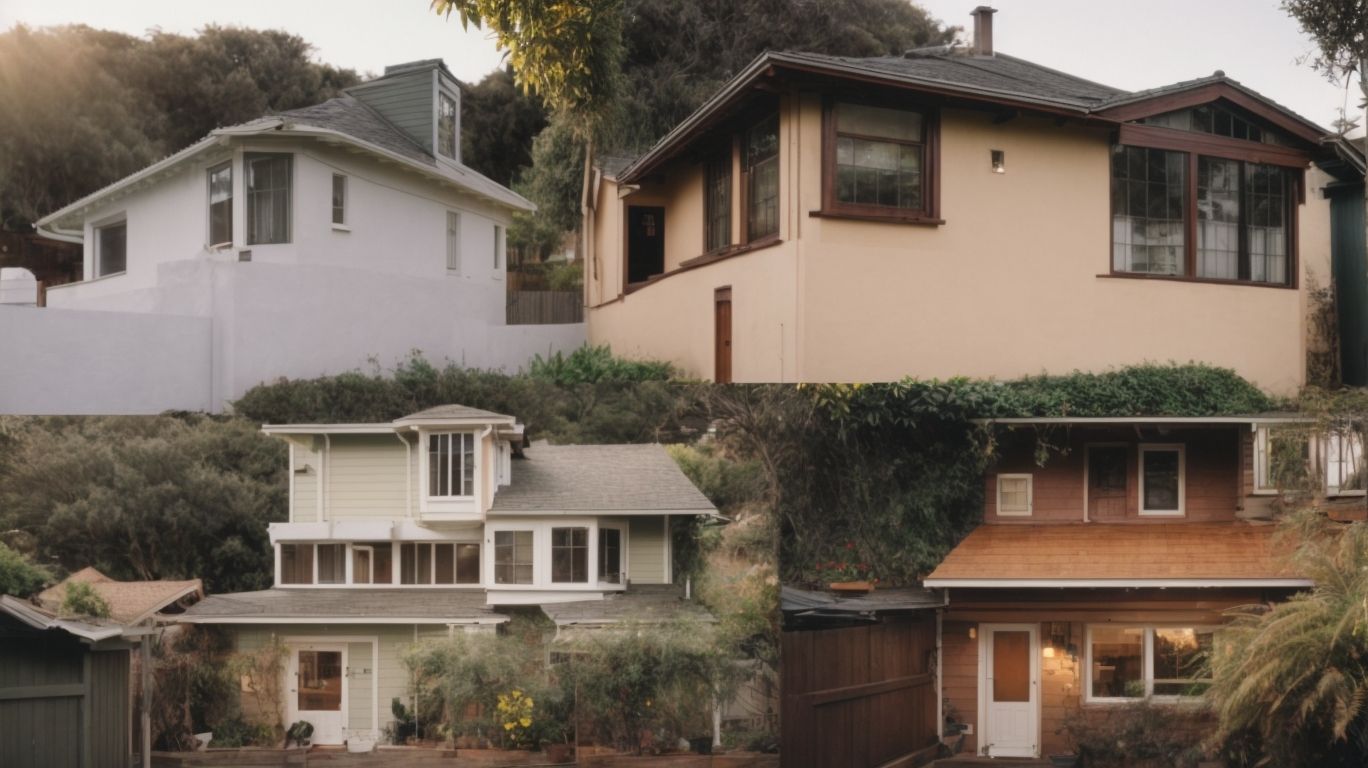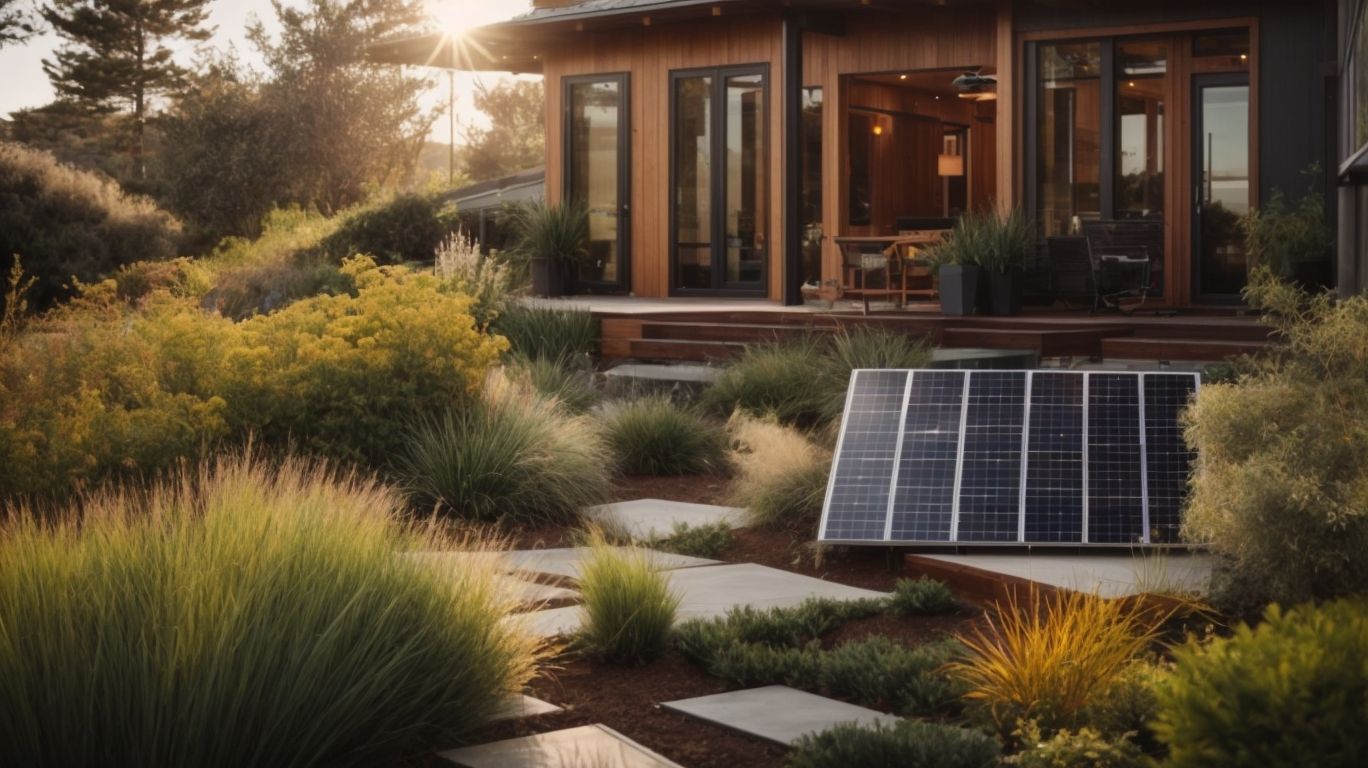
Before & After Magic: Transformative Second Story Additions in the Bay Area
Are you looking to add more space to your home without the hassle of moving?
Second story additions might be the perfect solution for you. In this article, we will explore the benefits of second story additions in the Bay Area, the steps involved in the process, and the potential challenges you may face.
From increasing living space and property value to customization and personalization, second story additions offer a host of advantages.
Let’s dive into the world of transformative home renovations in the Bay Area.
What Are Second Story Additions?
Second story additions refer to the process of adding a new level to an existing home, transforming its structure and expanding its living space significantly.
This type of renovation allows homeowners to maximize the potential of their property without expanding its footprint, making it a popular choice for those looking to increase living space in a cost-effective manner. By incorporating an additional level, second story additions can provide more rooms for bedrooms, bathrooms, or even a home office, enhancing the functional and aesthetic aspects of the house.
When planning for such renovations, considerations such as structural integrity, building codes, and design coherence with the existing structure must be carefully evaluated to ensure a successful transformation of the home.
Why Consider a Second Story Addition?
Considering a second story addition for your home renovation project can be a transformative decision that not only enhances your living space but also significantly increases the real estate value of your property.
Opting for a second story addition provides homeowners with the opportunity to expand their living space without compromising on their outdoor area. This vertical expansion allows for additional bedrooms, bathrooms, or even a home office, catering to the changing needs of the family.
The customization options in design are endless, enabling homeowners to create a space that reflects their unique style and preferences. From modern layouts to traditional charm, a well-executed second story addition adds a touch of luxury and sophistication to any home, making it a worthwhile long-term investment.”
Increase Living Space
One of the primary reasons to opt for a second story addition is to increase your living space significantly, leading to a home transformation that provides more functional spaces for your family’s needs.
By adding a second story to your home, you not only gain extra square footage but also open up a world of possibilities for creating new rooms such as additional bedrooms, bathrooms, or a cozy home office. This expansion allows for a more efficient use of the existing property, enhancing its value and appeal. The integration of a second story can bring about a seamless blend of interior design elements, maximizing natural light, ventilation, and overall aesthetics.
Add Value to Your Home
Investing in a second story addition can significantly add value to your home by enhancing its overall appeal, increasing property enhancements, and showcasing quality residential construction.
By incorporating modern design elements and upgraded technologies into the second story addition, you can elevate the aesthetic appeal of your property while making it more functional and convenient for daily living. These residential upgrades not only enhance the visual appeal of your home but also reflect the current trends in real estate, making your property more marketable and increasing its overall value in the competitive housing market.”
Avoid the Hassle of Moving
Opting for a second story addition allows homeowners to avoid the hassle of moving to a new property, providing a seamless renovation process that can be completed within a specific timeframe.
By choosing to add a second story to their existing home, individuals can benefit from the convenience of staying in their familiar neighborhood while achieving the desired house expansion and customization. This alternative offers homeowners the opportunity to upgrade their living space without the stress of uprooting their lives and starting afresh elsewhere. Not only does a second story addition save time compared to searching for a new home, but it also allows for a more personalized touch in creating the dream home right where they are.
What Are the Steps Involved in a Second Story Addition?
The process of a second story addition involves multiple steps, including consultation, design, obtaining permits, structural work, roofing, and various installations such as electrical, plumbing, and HVAC systems, all while adhering to construction costs and meeting building inspection requirements.
Once the initial consultation is completed and the design phase is underway, the next crucial step is obtaining necessary permits to ensure the project complies with local building codes.
Structural work comes into play, strengthening the existing structure to support the additional story. This is followed by roofing installation to provide proper protection. Installing essential systems like electrical, plumbing, and HVAC is essential for functionality and comfort.
Throughout the process, meticulous project management is key to staying on schedule and within budget.
Consultation and Design Phase
The initial consultation and design phase of a second story addition project are crucial stages where homeowners work closely with architects and designers to plan the structural changes and layout modifications required for the expansion.
During this collaborative process, architectural planning plays a vital role in ensuring that the new addition seamlessly integrates with the existing structure while meeting all building code requirements.
Design customization allows homeowners to personalize their space and create a unique aesthetic that reflects their style and preferences. By incorporating homeowner preferences into the design, architects and designers can create a space that not only meets functional needs but also enhances the overall appeal and value of the home.
Obtaining Permits
The process of obtaining permits for a second story addition involves navigating through zoning regulations, obtaining necessary building permits, and ensuring compliance with local building codes and regulations to proceed with the construction phase.
When it comes to regulations, it is crucial for homeowners to understand that zoning regulations dictate how properties can be used and developed within a specific area, ensuring harmony in the neighborhood.
Building codes set the standards for construction, covering aspects like structural integrity, fire safety, and electrical systems. By obtaining the required permits and following these regulations diligently, individuals can avoid costly delays, fines, or even having to demolish the structure later on to bring it up to code.
Demolition and Structural Work
The demolition and structural work phase of a second story addition project involves preparing the existing structure, constructing new foundations, and collaborating with skilled tradespeople such as carpenters, roofers, and foundation specialists to ensure structural integrity.
During this critical phase, a series of tasks are carried out to lay a solid foundation for the additional story. This encompasses excavating and clearing the site, reinforcing the existing structure as needed, and pouring concrete footings to support the new load.
Skilled craftspeople play a crucial role in implementing structural enhancements, ensuring that the new construction seamlessly integrates with the existing framework. Quality craftsmanship and attention to detail are paramount, as even minor oversights can have significant implications for the stability and longevity of the building.
Collaboration with skilled labor is key in navigating the complexities of this stage, collectively working towards a successful and durable outcome.
Framing and Roofing
Framing and roofing are essential components of a second story addition, involving the installation of new structural framing, roofing materials, windows, doors, and features such as skylights to transform the existing home into a multi-level living space.
These elements play a crucial role not only in expanding the living area but also in ensuring the structural integrity and weatherproofing of the new space.
When adding a second story, the framing process requires precision and expertise to support the additional weight and ensure the stability of the entire structure.
Roofing materials are carefully chosen to provide durability and protection from elements while also complementing the overall design.
Incorporating windows strategically allows for natural light and ventilation, enhancing the ambiance and energy efficiency of the expanded home.”
Electrical, Plumbing, and HVAC
The installation of electrical, plumbing, and HVAC systems is a critical stage in a second story addition project, ensuring the functionality, energy efficiency, and comfort of the expanded living space through proper insulation, wiring, and plumbing installations.
Proper wiring not only ensures the safe and efficient operation of electrical fixtures but also paves the way for incorporating smart home technologies.
Plumbing layouts are crucial to provide adequate water flow and drainage, while also considering future maintenance needs.
Ventilation systems play a key role in maintaining indoor air quality and regulating temperature levels, contributing to a healthier and more comfortable living environment.
By adhering to modern standards and employing energy-efficient practices, homeowners can experience long-term benefits in terms of reduced utility costs and enhanced overall livability.
Insulation and Drywall
Insulation and drywall installation play a crucial role in enhancing energy efficiency, soundproofing, and interior aesthetics in a second story addition, using quality building materials to create comfortable and sustainable living spaces.
Proper insulation techniques ensure that the second story addition is well-protected from external temperature fluctuations, helping to reduce energy consumption and lower utility costs.
Soundproofing provided by insulation and drywall enables a quieter and more peaceful indoor environment, enhancing the overall comfort of the living space.
When selecting sustainable building materials for insulation and drywall, such as recycled content or low VOC options, homeowners contribute to environmental sustainability while improving the indoor air quality.
The choice of drywall finishes can also significantly impact the visual appeal and durability of the living space.
Finishing Touches and Final Inspections
Adding finishing touches and completing final inspections mark the last phase of a second story addition project, allowing for the integration of custom features, luxury additions, and high-quality craftsmanship that elevate the overall aesthetic and functionality of the transformed home.
These final touches are instrumental in ensuring that the renovation meets the client’s expectations and enhances the value of the property. Attention to detail plays a crucial role in perfecting the intricate elements that truly make a house a home.
By adhering to industry standards and focusing on customer satisfaction, contractors can guarantee a successful outcome and deliver a living space that exceeds the homeowner’s dreams. Whether it’s intricate woodwork, premium fixtures, or bespoke finishes, the devil is truly in the details when it comes to creating a luxurious and personalized living environment.
What Are the Benefits of a Second Story Addition in the Bay Area?
Opting for a second story addition in the Bay Area offers unique benefits such as maximizing limited space, capturing scenic views, enhancing property value, and contributing to the urban development landscape of the region.
These additions can play a significant role in aligning with the evolving neighborhood changes and fostering sustainable practices. By adding a second story, homeowners in the Bay Area not only increase living space but also make use of underutilized roof areas, which is particularly crucial in urban areas where space is at a premium. The modernization trends in the region also favor such renovations, as they not only provide practical benefits but also contribute to the aesthetic appeal and architectural diversity of the area.
Utilizing Limited Space
In the Bay Area, second story additions offer homeowners the opportunity to maximize limited space effectively, incorporating storage solutions, closets, and functional areas that cater to the unique spatial constraints of the region.
These additions are not just about adding more square footage, but about creating smart design solutions that make the most of every inch. By strategically integrating storage options like built-in closets, shelving units, and multipurpose furniture, homeowners can optimize their living areas while maintaining a sense of openness and airiness. The layout designs of these second-story additions are carefully crafted to meet the specific needs of urban environments, where space is a premium. This approach ensures that every corner serves a purpose and contributes to a functional and aesthetically pleasing home.
Taking Advantage of Views
Second story additions in the Bay Area allow residents to capitalize on scenic views, natural light, and architectural features such as skylights, creating an immersive living experience that connects indoor spaces with the picturesque surroundings.
These architectural enhancements not only bring in an abundance of natural light but also offer a seamless transition between the interior and exterior environments. By strategically placing windows and incorporating open layouts, residents can enjoy a sense of continuity with the outdoors, fostering a sense of tranquility within the home. The use of skylights further amplifies the connection to nature, infusing the living spaces with a warm, inviting ambiance. This emphasis on maximizing natural light, ventilation, and views underscores the importance of creating a harmonious living environment that promotes well-being and appreciation for the beauty of the Bay Area.
Increasing Property Value
Investing in a second story addition in the Bay Area can lead to a substantial increase in property value, boosting the home resale value significantly while enhancing the overall aesthetics and functionality of the residence.
By adding a second story, homeowners can take advantage of the opportunity to incorporate various architectural styles that appeal to potential buyers, such as modern, craftsman, or traditional designs. These styles can greatly elevate the property’s curb appeal and make it stand out in the competitive real estate market of the Bay Area.
The creation of functional spaces like additional bedrooms, bathrooms, or a home office on the second floor can significantly increase the desirability of the property for prospective buyers seeking more living space and versatility in a home. Quality craftsmanship in the construction of the second story, including attention to detail and the use of high-quality materials, further enhances the overall value and attractiveness of the property, making it a sought-after investment in the market.
Customization and Personalization
Second story additions offer homeowners in the Bay Area the opportunity for customization and personalization, allowing them to tailor the design, interior layout, and amenities to reflect their unique preferences and lifestyle.
By incorporating personalized touches and selecting bespoke design elements, homeowners can create living spaces that truly resonate with their individual tastes. The flexibility of second story additions in the Bay Area enables residents to integrate functional features that cater to their specific needs and enhance their overall quality of life. From custom-built storage solutions to dedicated areas for relaxation or creative pursuits, these additions present endless possibilities for homeowners to bring their vision to life and cultivate a home environment that is both aesthetically pleasing and functionally efficient.
What Are the Potential Challenges of a Second Story Addition?
While second story additions offer numerous benefits, they also present potential challenges such as addressing structural limitations, adhering to building codes, managing costs, and mitigating disruptions to daily life during the renovation process.
One key structural consideration when adding a second story to a home is ensuring that the existing foundation and infrastructure can support the increased weight and load. Regulatory compliance adds another layer of complexity, requiring homeowners to navigate permits, inspections, and zoning regulations.
Cost management becomes crucial as unexpected expenses can arise during construction. The noise, dust, and temporary inconveniences associated with the renovation can disrupt daily routines. Homeowners can overcome these challenges by working closely with architects, engineers, and contractors to develop a well-thought-out plan, setting realistic budget expectations, and staying informed about industry best practices.
Structural Limitations and Building Codes
Dealing with structural limitations and navigating building codes are key challenges in a second story addition project, requiring the expertise of structural engineers, architects, and contractors to ensure compliance with safety standards and regulatory requirements.
Structural engineering plays a vital role in assessing the existing structure’s capacity to support additional weight and identifying necessary modifications. Simultaneously, architectural planning ensures the cohesive integration of the new second story while adhering to zoning laws and aesthetics.
Building codes set forth by authorities dictate parameters for construction practices, materials, and safety measures. Compliance with these regulations is crucial to ensure the project meets quality and safety standards. Professional expertise in navigating these complexities is essential for successful execution and ensuring structural integrity throughout the second story addition process.
Cost and Budgeting
Managing costs and budgeting effectively are critical aspects of a second story addition, requiring careful planning, cost estimation, and budget management to ensure the project stays within financial constraints while delivering the desired results.
One key consideration in managing the financial aspects of a second story addition is determining the construction costs involved. It’s essential to have a clear understanding of the expenses associated with materials, labor, permits, and any unforeseen costs that may arise during the renovation process.
Allocating a realistic budget that encompasses these elements is vital to avoid financial setbacks and delays in the project timeline. As part of financial planning, exploring cost-effective renovation strategies and seeking competitive bids from contractors can help in maximizing the budget without compromising on quality.
Transparent communication with contractors throughout the construction phase is also crucial to ensure that any modifications or additional expenses are addressed promptly to prevent budget overruns.
Disruption to Daily Life
The renovation process of a second story addition can cause disruptions to daily life, highlighting the importance of effective project management, clear communication, and adherence to the timeframe to minimize inconveniences and ensure a smooth transition during the construction phase.
During such renovations, homeowners may encounter challenges like noise, dust, and limited access to certain areas. To mitigate these disruptions, it is crucial for the construction team to establish clear communication protocols, provide regular updates on progress, and address any concerns promptly.
By closely adhering to the project timeline, unexpected delays can be minimized, allowing residents to better plan for contingencies such as temporary accommodations or adjusted schedules. Maintaining a comfortable living environment amidst the construction chaos is possible by setting designated work zones, implementing noise reduction measures, and ensuring proper ventilation during the renovation process.




No Comments